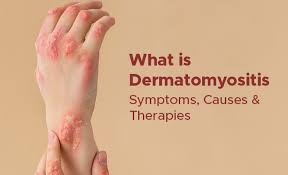Increased Risk of Dermatomyositis in Patients with Psoriasis: A Retrospective Cohort Study
Purpose
This study aimed to investigate the risk of dermatomyositis among patients with psoriasis in a large population.
Patients and Methods
Individuals aged ≥20 years with records in the TriNetX database from January 1, 2002 to December 31, 2022 were included. Diagnoses of psoriasis, non-psoriasis, dermatomyositis, and associated comorbidities were established using the International Classification of Diseases, 10th Revision, Clinical Modification (ICD-10-CM) code. Patients who were diagnosed with dermatomyositis before the index date were excluded. Propensity score matching (PSM) was performed in a 1:1 ratio between the psoriasis group and non-psoriasis group. Kaplan–Meier curves were used to determine the cumulative incidence of dermatomyositis, and the Cox proportional hazard model was used to estimate the hazard ratio between the two groups.
Results
After PSM, 301018 individuals were included in the psoriasis and non-psoriasis groups, respectively. A higher risk of dermatomyositis was identified in patients with psoriasis than in those without (HR: 2.41, 95% CI: 2.01–2.89). This elevated risk was further confirmed in various subgroup analyses. Specifically, patients with PsA exhibited a higher incidence of dermatomyositis than those without PsA (HR, 1.73; 95% CI, 1.32–2.28). Patients treated with interleukin-17 inhibitors (IL-17i) showed a significantly higher risk of developing dermatomyositis compared to those naïve to biological agents (HR, 5.79; 95% CI, 1.57–21.31). In the European, Middle East, and Africa network and Asia-Pacific network, the risk of dermatomyositis in patients with psoriasis was higher than that in patients without psoriasis (HR (95% CI): 4.77 (1.40–16.10) and 2.50 (1.33–4.66), respectively).
Conclusion
This study revealed a higher risk of dermatomyositis in patients with psoriasis than in those without. The psoriatic patients with PsA or those who had received IL-17i treatment demonstrated a significantly higher risk of developing dermatomyositis.
dermatomyositis, inflammatory myopathy, autoimmune disease, muscle weakness, skin rash, heliotrope rash, Gottron’s papules, muscle biopsy, creatine kinase, anti-Mi-2 antibody, anti-MDA5 antibody, interstitial lung disease, calcinosis, dysphagia, proximal muscles, cutaneous manifestations, immunosuppressive therapy, corticosteroids, polymyositis, juvenile dermatomyositis
#dermatomyositis, #inflammatorymyopathy, #autoimmunedisease, #muscleweakness, #skinrash, #heliotroperash, #gottronspapules, #musclebiopsy, #creatinekinase, #antimi2, #antimda5, #interstitiallungdisease, #calcinosis, #dysphagia, #proximalmuscles, #cutaneousmanifestations, #immunosuppressive, #corticosteroids, #polymyositis, #juveniledermatomyositis
International Conference on Genetics and Genomics of Diseases
Visit: genetics-conferences.healthcarek.com
Award Nomination: genetics-conferences.healthcarek.com/award-nomination/?ecategory=Awards&rcategory=Awardee
Award registration: genetics-conferences.healthcarek.com/award-registration/
For Enquiries: contact@healthcarek.com
Get Connected Here
---------------------------------
---------------------------------
in.pinterest.com/Dorita0211
twitter.com/Dorita_02_11_
facebook.com/profile.php?id=61555903296992
instagram.com/p/C4ukfcOsK36
genetics-awards.blogspot.com/
youtube.com/@GeneticsHealthcare

Comments
Post a Comment